In 2021, Epic Games became one of the world’s most popular gaming companies, primarily because of its success with Fortnite. Now, the company wants to take gaming to the next level, and it will do so by launching Verse, a metaverse programming language. This is exciting as it will bring numerous opportunities to developers wanting to create Web3 games. However, what exactly is the Verse programming language? What makes it stand out among the other available languages? Let’s find out in this article as we explore Verse, Epic Games, and the vision behind this new metaverse programming language. Also, we explore why developers shouldn’t wait for the launch of Verse to dive into the metaverse but instead step into Web3 now by utilizing another valuable tool that can lay the foundation for any blockchain project!
As we move forward, we’ll initiate this article by diving right into the Verse programming language and Epic Games. Then, we will also explain further what Epic Games and Verse are. Furthermore, you’ll also have a chance to discover some other leading metaverse programming languages and how Verse distinguishes itself from them. Last but not least, you’ll learn how you can dive into metaverse development with Moralis today. After all, many Moralis users have been creating all sorts of metaverse and metaverse-like dapps for quite some time. So, if you’re interested in using this cross-platform Web3 API provider, make sure to create your free Moralis account today! Moreover, given the fact that Moralis supports all leading programming languages, the possibility of Moralis supporting the Verse programming language in the near future is pretty high.

Exploring the Verse Programming Language and Epic Games
In December 2022, Epic Games released its “Beyond Functional Programming: The Verse Programming Language” presentation. As such, they gave various programming communities a chance to see what their new metaverse programming language is all about. Simon Peyton Jones did a great job explaining the core of Verse in his presentation for the Haskell eXchange online conference. After a proper introduction, he dived into different aspects of the Verse programming language. Consequently, we now have a proper sense of many aspects of Verse. Moreover, we will share some of these details with you in this article. However, if you want to explore Verse in more detail yourself, make sure to visit the Skills Matter YouTube channel and watch the “Beyond Functional Programming: The Verse Programming Language” video. Or, scroll down to the “What is the Verse Programming Language?” section below and watch the presentation!
That said, before we take a closer look at some of the details of this new metaverse programming language, it seems fitting to make sure you all know what Epic Games is.
What is Epic Games?
Epic Games is one of the leading video game publishing and software development companies in the world. The company is based in Cary, North Carolina (USA). Furthermore, for a video game company, Epic Games has quite a long history; its beginnings reach back to 1991. In that year, Tim Sweeney, back then still a mechanical engineering student, founded Potomac Computer Systems. Sweeney rebranded the company into Epic MegaGames in 1992. That name stuck for seven years when the company moved its headquarters to the aforementioned location. So, in 1999, “Mega” was left out of the name, and “Epic Games” became the company’s title.
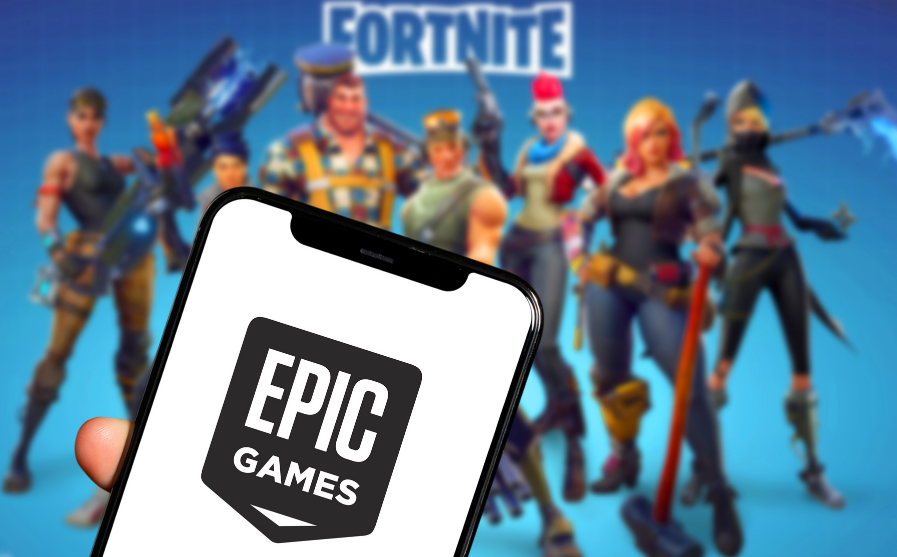
Since then, the company has produced many successful games and software for different platforms. However, Epic Games’ greatest products are Unreal Engine and Fortnite. The former is a commercially available game engine. Moreover, they also use that engine to power their internally developed video games. On the other hand, Fortnite is Epic Games’ most popular game. The company launched this online video game in 2017. Since that year, the game has been breaking all sorts of records. In fact, Fortnite Battle Royale – one of the game’s three game modes – became a cultural phenomenon played by around three million players at one time.
The success of Epic Games is undeniable, and over the past three decades, the company has proven to know what people desire when it comes to gaming. By focusing on creating the Verse programming language, Tim and his team are saying, “metaverse is the future.”
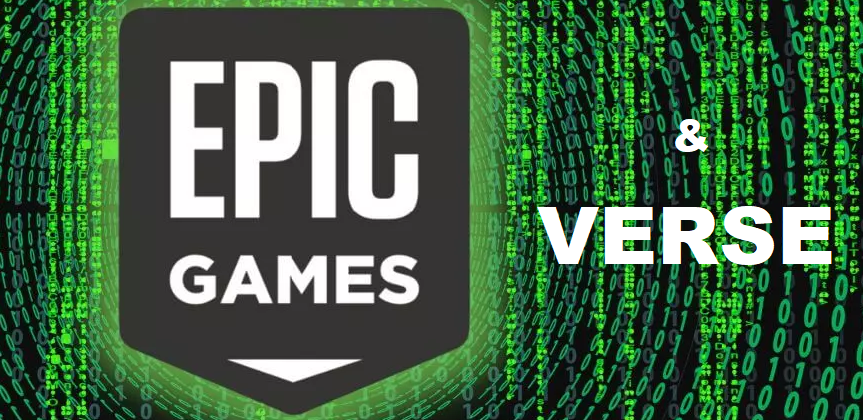
What is the Verse Programming Language?
The Verse programming language is a programming language for the metaverse. Fundamentally, it’s a “functional-declarative” programming language. The latter means that a variable actually names a single value, not a cell whose value changes over time. Verse is also a functional logic language (such as the programming languages “Curry” or “Mercury”). In addition, its evaluation model is also lenient but not strict (there’s no fixed evaluation order). Furthermore, Verse is not “lazy”; there’re no cases of stuff not getting evaluated at all. Instead, everything gets evaluated but perhaps out of order. Moreover, this programming language has an unusual, unique static type system, where types are first-class values. Verse also has an “effect system” instead of using “monads.”
Additionally, this metaverse programming language results from Tim Sweeney’s vision of growing an immersive 3D reality of the game world into an immersive 3D social reality of the metaverse. Moreover, as a C++ expert, Tim believes that the Web3 era calls for a new programming language – one curated for the metaverse. Now, as mentioned previously, you can watch the presentation in the following clip to find out in-depth what the language is about. If you don’t have time to watch the hour-long video, read on and explore the essential highlights!
When is the Launch of the Verse Programming Language?
When will the initial launch of the Verse programming language happen? Well, currently, there is no definite date for the language’s launch, unfortunately. However, as Simon Peyton briefly explained in his presentation, the launch will most likely occur in 2023, but in a limited form.
The Vision Behind Verse
In Tim’s eyes, the metaverse is a place for people to meet and interact in a 3D real-time virtual reality. As such, “social” is the key phrase. This also means the metaverse must include an open economy with rules without an established corporate overlord. Furthermore, the metaverse is a creation platform open to all programmers, artists, and designers. Everyone’s code and content must interoperate dynamically, with live updates of running code. This means a pervasive open standard is needed. All these ideas and visions are packed in the Verse programming language.
So, Tim and Epic Games promise to publish papers and specifications for anyone to implement. They promise to offer a compiler, a verifier, and a runtime under a permissive open-source license with no IP encumbrances. When it comes to this new language, Epic Games’ goal is to engage in a rich dialogue with the community that will make Verse better.

Closer Look at Verse
As an expression-oriented language, Verse has a subset that looks like a perfectly ordinary functional language. Accordingly, it has numbers (integers) and tuples or arrays:
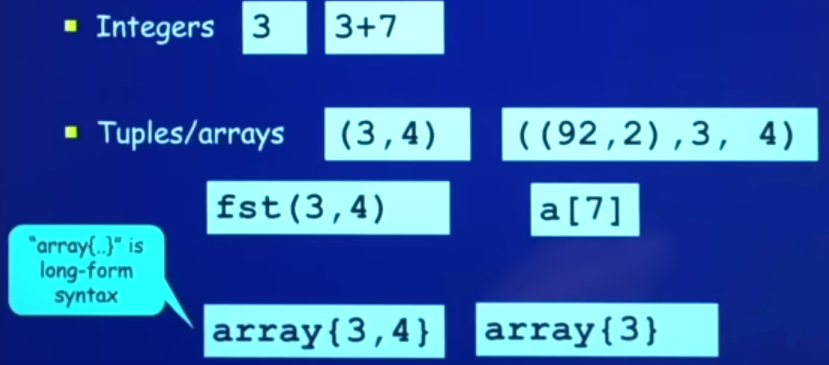
Moreover, it has bindings (think of “let” or “wear” bindings) written without a keyword in the front. Instead, they are defined using “colon equals” and semicolons where order doesn’t matter:
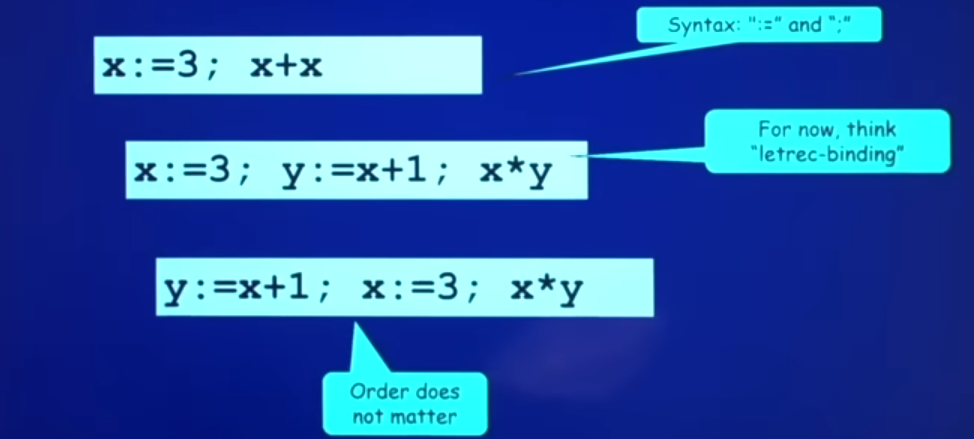
Furthermore, the Verse programming language also has first-class functions and lambda expressions:
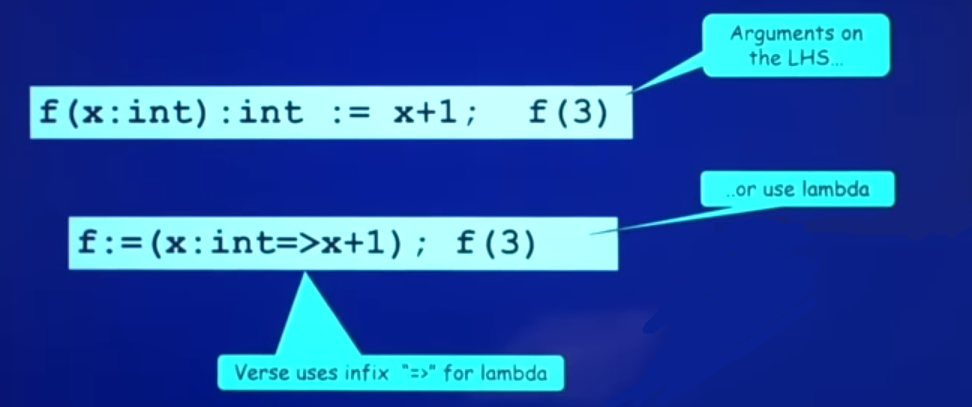
It also includes conditionals and recursion:

Another core aspect of Verse is “choice,” which is something new that this Web3 programming language brings to the table. For instance, a Haskell expression denotes one value; however, a Verse expression denotes a sequence of zero or more values:

So, when combining choices with binding, things become quite useful. Here’s a simple example:

It’s important to point out that a variable is always bound to a single value, not a sequence of values. This means that in the above example, Verse executes “(x+1)” with “x” bound to “1,” then with “x” bound to “7,” and finally with “x” bound to “2” and not with “x” bound to “(1|7|2).” To illustrate this further, let’s look at an example of nested choices:

Nonetheless, here’s another interesting example:

Note: We encourage you to watch the above-mentioned video to also see how conditionals, conjunctions and disjunctions, equalities, arrays, sequences, generalization, multiple values, failures, indexing, narrowing, inverses, binding variables, functions, verification, rewriting rules, etc. come to play in Verse. This is also the place to learn what “MaxVerse” and “CoreVerse” are. However, for an ultra-technical deep dive, make sure to check out the Verse Calculus paper: “https://simon.peytonjones.org/verse-calculus/.”

Finally, let’s conclude this section with another Verse key idea: allowing you to apply any rewrite rule anywhere, anytime.

How Verse Distinguishes Itself from Other Metaverse Programming Languages
You are probably aware that there are many other great programming languages at your disposal. While some came to life to accommodate the needs of blockchain programming (e.g., Solidity), there are leading legacy programming languages that can and are already being used to create metaverse dapps (decentralized applications). So, it’s only natural that we answer the “do we really need a new language?” question.
Of course, we leave it up to you to decide on your answer. However, according to Tim and other experts involved in the inception of the Verse programming language, Verse improves the aspects of being scalable to running code, where the goal is for millions of programmers that do not know each other to write the code. Also, it is transactional from the start. Lastly, it has strong interop guarantees over time and a compiled time guarantee.
In addition, Verse must also be learnable as a first language (e.g., JavaScript) so that devs can enter the space frictionlessly. For instance, C++ does not meet that criterion. Furthermore, a proper metaverse language must also be extensible, meaning that the mechanisms for the language need to grow over time without breaking code naturally.
The current leading Web3 development programming languages include:
- Solidity (Ethereum and other EVM-compatible chains)
- Rust (Solana ecosystem)
- Clarity (Bitcoin ecosystem)
- Curry (experimental functional logic programming language)
- Mercury (functional logic programming language)
However, as you can imagine, many aspects of Web2 will continue to thrive in the Web3 era. As such, with the right tools on your side, you can use the following leading legacy programming languages (add many others) to build metaverse dapps today:
- JavaScript
- C#
- C++
- Python
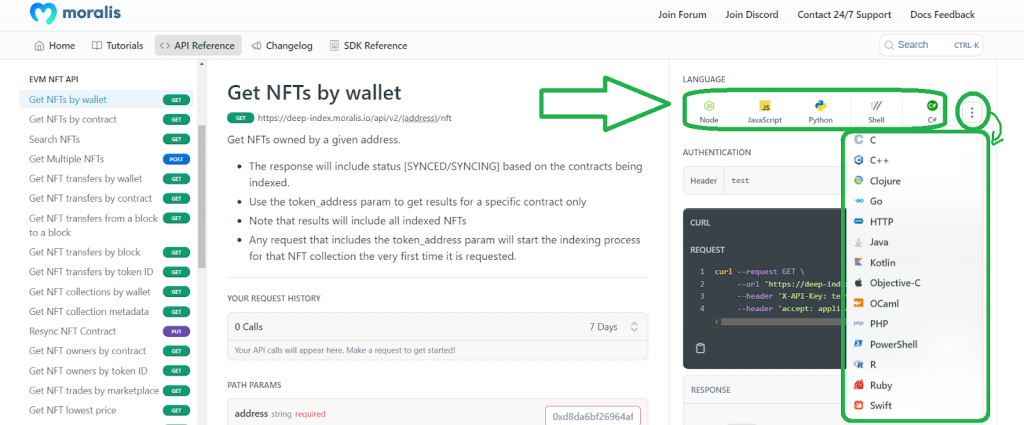
Beyond Verse – Dive Into the Metaverse with Moralis
Moralis is the tool to use if you want to dive into Web3 and metaverse development today. As the above screenshot indicates, you can use Moralis’ ultimate Web3 API with all the leading programming languages. This means that you don’t have to wait for Verse and its reach to maturity to start building. Instead, you can use your legacy skills and bridge the development gap between Web2 and Web3 with Moralis. What’s more, we can expect to find the Verse programming language on the list outlined earlier once it starts its march. Until then, you can start building killer metaverse dapps with Moralis’ SDK. The latter includes Moralis’ EVM API, Solana API, NFT API, Web3 Auth API, Streams API, and Token API. Hence, you can fetch any on-chain data effortlessly, and you can also listen to the blockchain via Web3 webhooks.

Furthermore, you can do all of the above across all leading blockchain networks. After all, Moralis is all about cross-chain interoperability. As a result, you can future-proof your work, as you will never be stuck developing for a specific blockchain network.
In addition to the wide support of programming languages and frameworks, Moralis also enables you to bring its power to any platform. Hence you can focus on metaverse and Web3 game development using PlayFab, Firebase, Supabase, Unity, etc. These also include other reputable Web3 protocols and solutions. Accordingly, you can use Moralis to build a Web3 multiplayer game, maybe even a Web3 Minecraft clone, create a dapp with PlayFab and Unity, and much more. Moreover, if you want to use Epic Games’ game engine with Moralis, make sure to check out the Web3 Unreal Engine 5 documentation.

Exploring Verse – A New Metaverse Programming Language from Epic Games – Summary
In today’s article, you had an opportunity to meet the Verse programming language. You learned what it is and what its main characteristics are. Along the way, you also learned what Epic Games is and how this company relates to Verse. We also explained how Verse distinguishes itself from other Web3 programming languages. Last but not least, you also had an opportunity to discover how you can dive into dapp development right now without any friction. As such, you now know that Moralis is the tool to use if you want to create metaverse dapps the easy way.
Moving forward, we encourage you to explore the Moralis documentation. Make sure to complete some beginner-friendly tutorials you can find in the documentation. In addition, don’t forget to expand your blockchain development knowledge by exploring different topics on Moralis’ YouTube channel and Web3 development blog. Moreover, if Web3 gaming is your primary focus, make sure to learn how to use Filecoin in Unity. Plus, you can discover the answer to the “what is Amazon GameSparks?” question and see how this AWS offering helps developers. You can also enroll in Moralis Academy and learn to create your metaverse.
